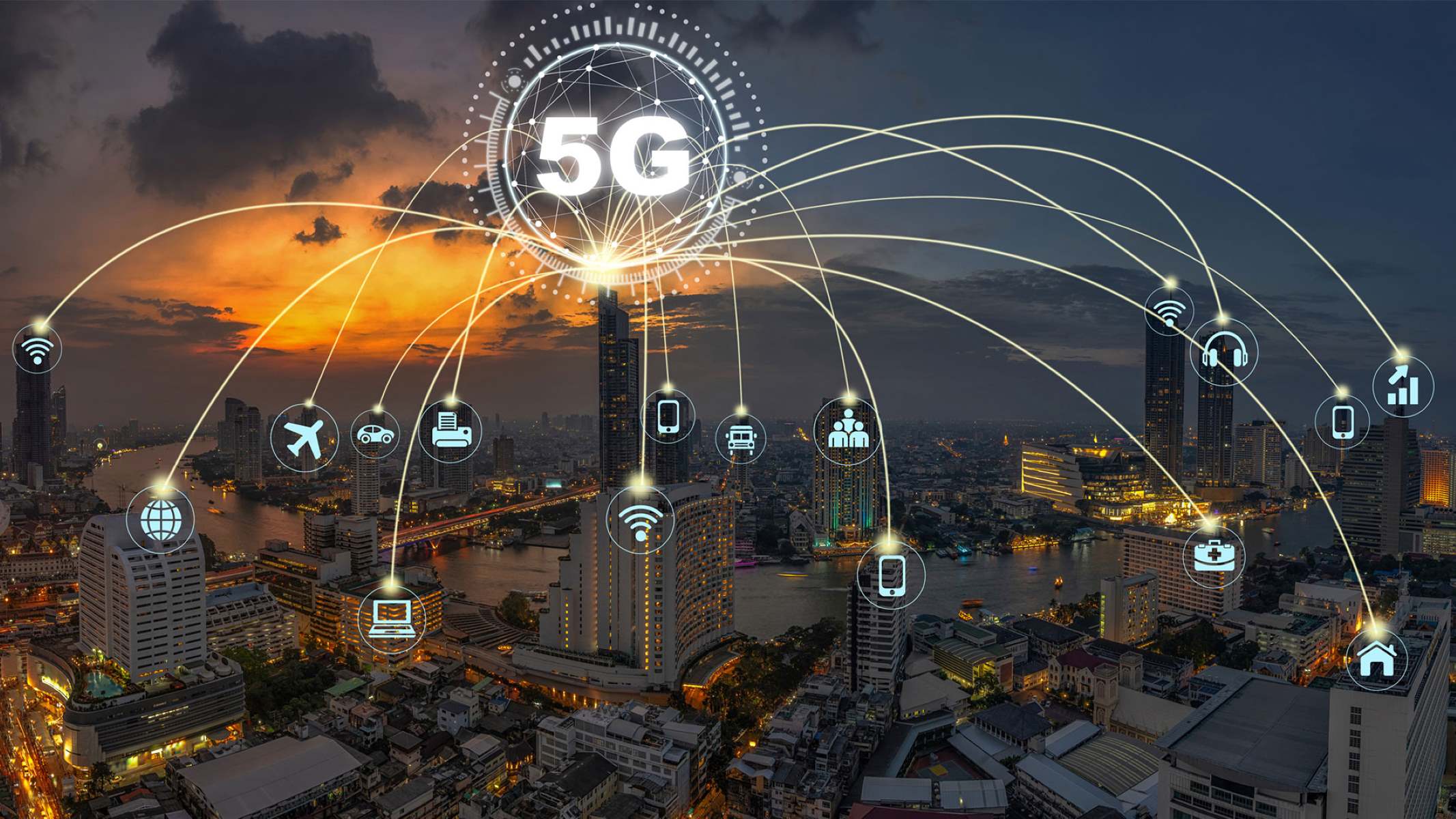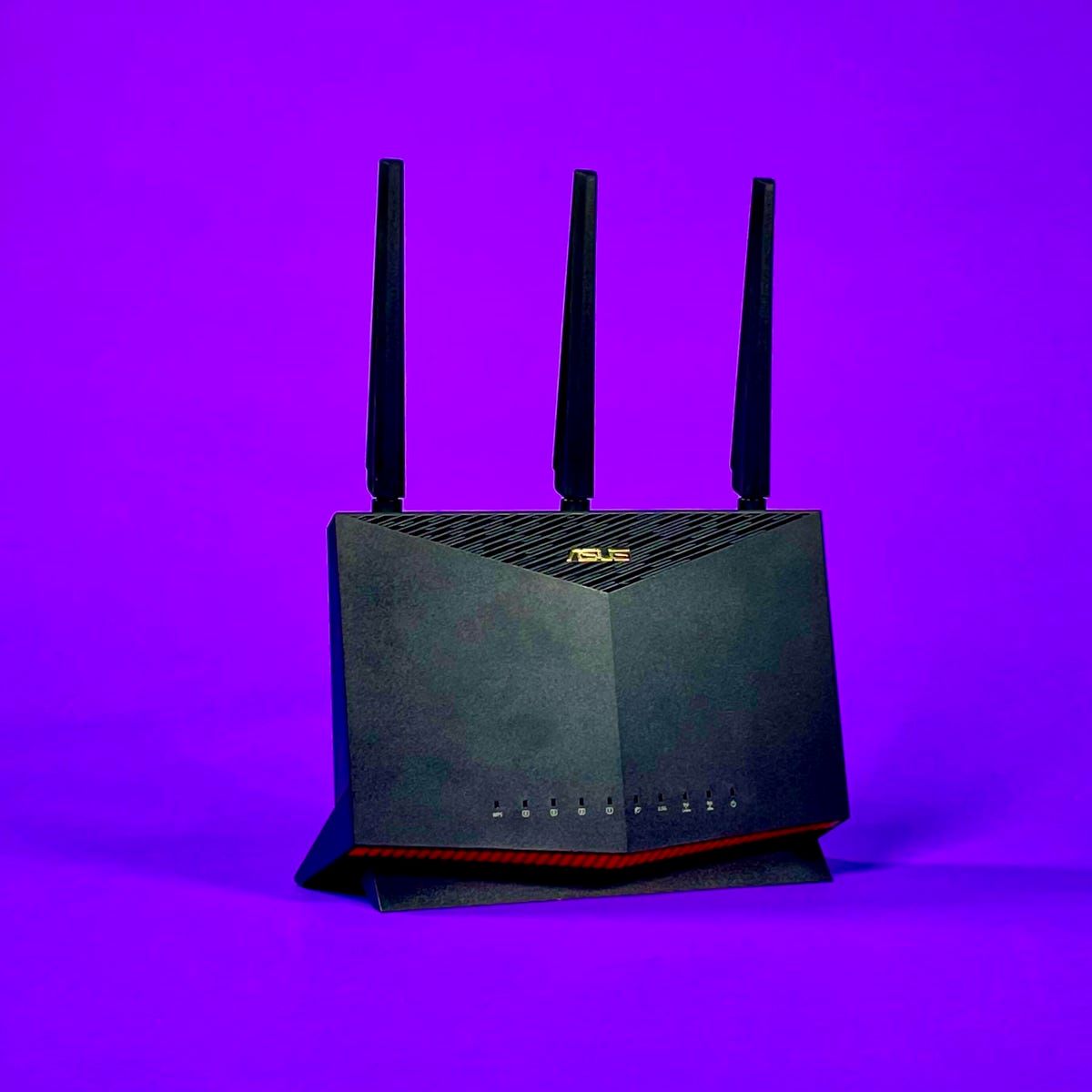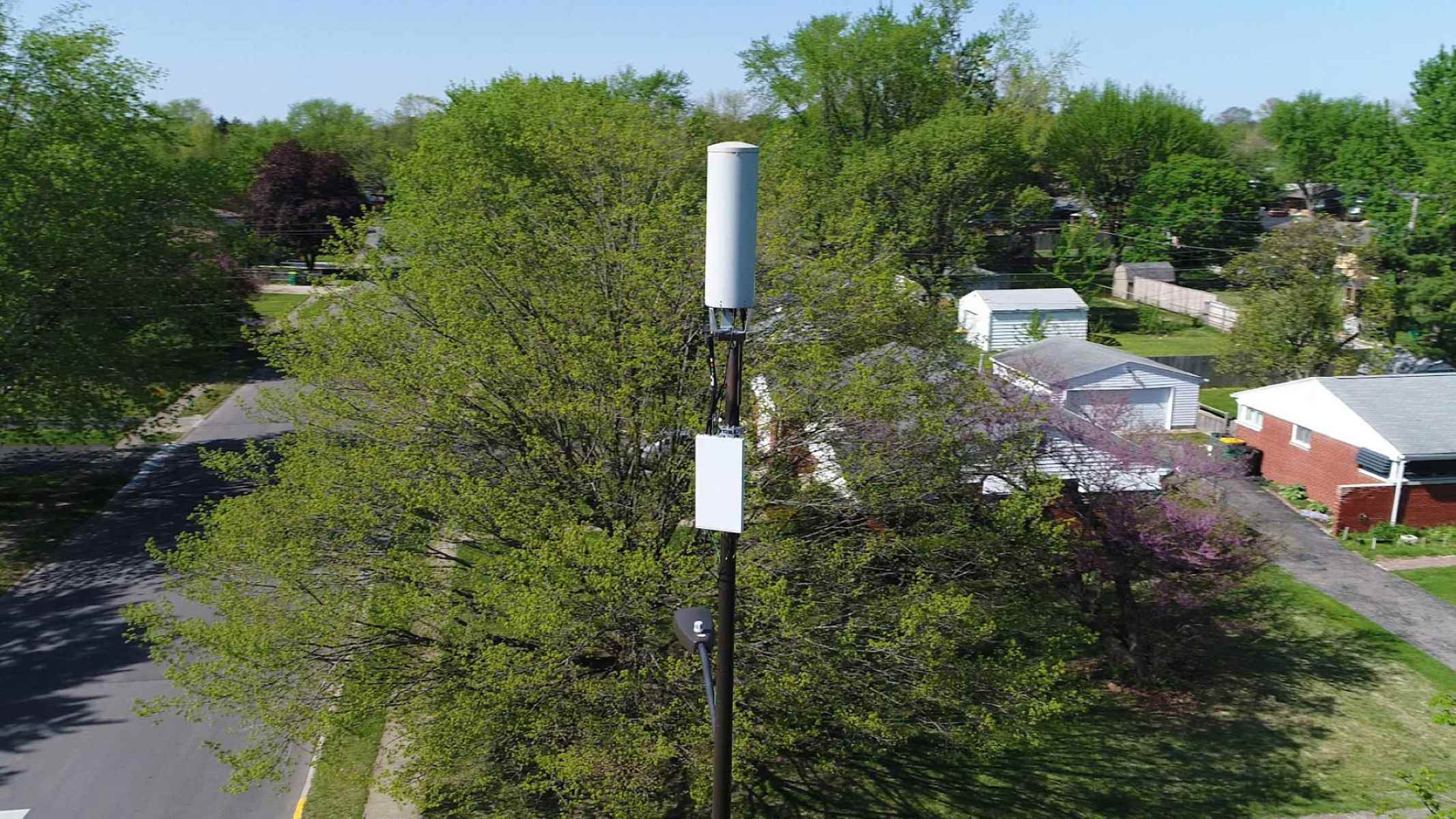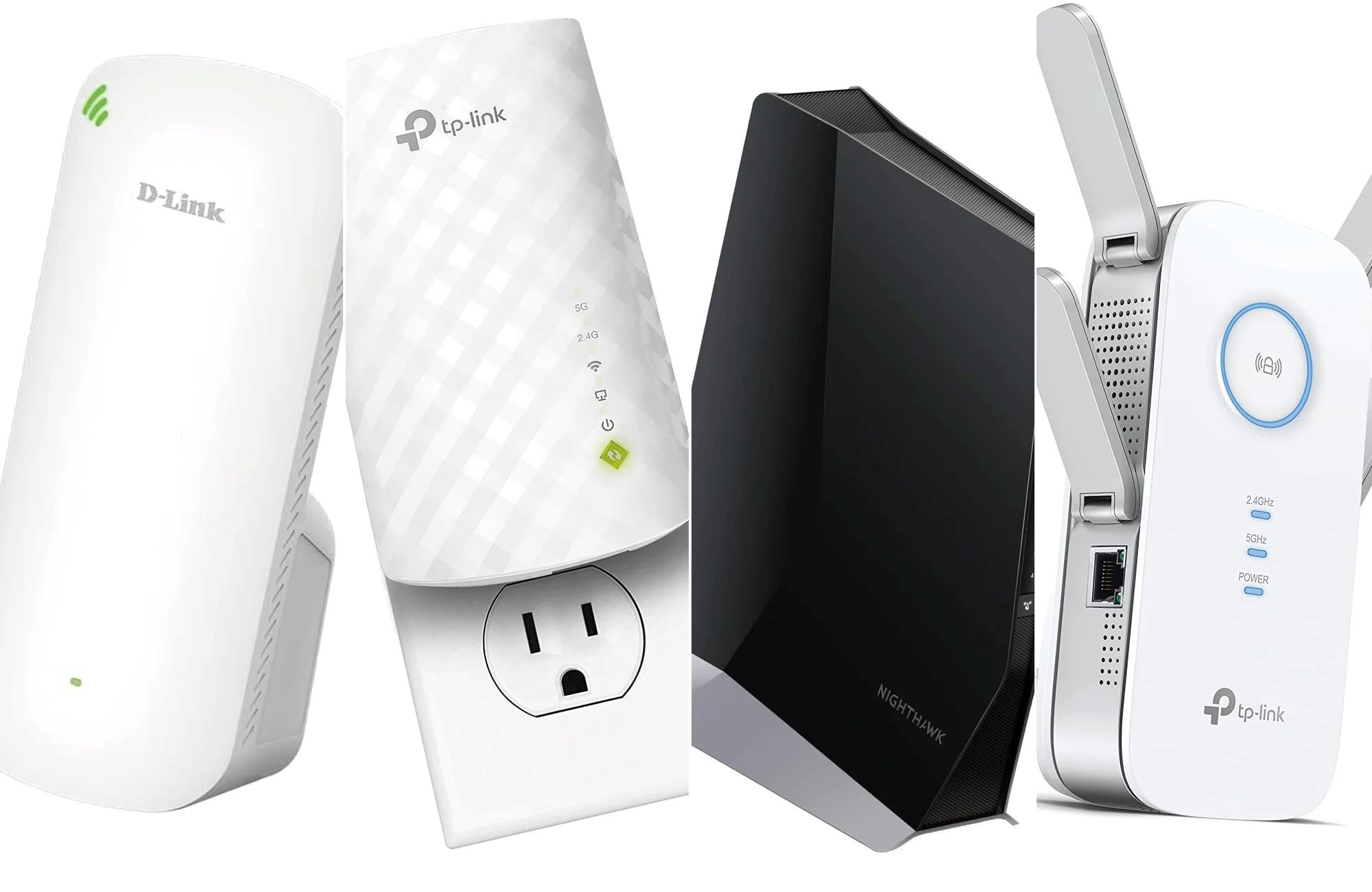Introduction
In today’s digital age, where connectivity plays a vital role in our daily lives, the demand for faster and more reliable wireless communication networks continues to grow. The fifth generation of wireless technology, or 5G, has emerged as the next leap in this evolution, promising unprecedented speeds, lower latency, and massive connection capacity.
One of the exciting advancements in the realm of 5G is extended range technology. As the name suggests, it aims to extend the coverage area of 5G networks, enabling connectivity in remote areas and improving signal strength in densely populated urban environments. By addressing the limitations of previous generations, 5G extended range has the potential to revolutionize various industries, from transportation and healthcare to manufacturing and entertainment.
But what exactly is 5G extended range, how does it work, and what are its advantages and challenges? In this article, we will explore the ins and outs of 5G extended range technology and delve into its potential applications and considerations.
What is 5G Extended Range?
5G extended range refers to a technology or feature that enhances the coverage area and extends the reach of 5G networks. While traditional 5G networks provide high-speed connectivity over relatively short distances, 5G extended range overcomes these limitations by enabling signals to travel farther and penetrate through various obstacles, such as buildings, trees, and other physical barriers.
This extension of range is achieved through the implementation of advanced technologies like beamforming and advanced antenna systems. These techniques help to focus and direct the signal towards specific areas, allowing for better signal propagation and coverage.
One of the key components of 5G extended range technology is the use of lower frequency bands, such as sub-6 GHz frequencies. Compared to the higher frequency bands used in traditional 5G networks, lower frequency signals have longer wavelengths that can travel longer distances and penetrate through obstacles with less attenuation.
Moreover, 5G extended range leverages techniques like carrier aggregation and dual-connectivity, which enable seamless handover between different frequency bands and network layers. This dynamic allocation of resources ensures continuous and reliable connectivity, even as users move between areas with varying signal strengths.
By extending the coverage area, 5G extended range technology brings the benefits of high-speed, low-latency, and high-bandwidth connectivity to areas that were previously underserved or inaccessible. This has tremendous implications for industries such as agriculture, transportation, and healthcare, where reliable connectivity is crucial for remote monitoring, autonomous systems, and telemedicine.
In the next section, we will delve deeper into how 5G extended range technology works and the advantages it offers.
How Does 5G Extended Range Work?
5G extended range technology utilizes a combination of innovative techniques to extend the coverage area and enhance the signal strength of 5G networks. These techniques include beamforming, advanced antenna systems, and the utilization of lower frequency bands.
Beamforming is a key technology used in 5G extended range. It involves the use of multiple antennas to focus and concentrate the signal towards specific areas or users. By directing the signal in a controlled manner, beamforming increases the signal strength and coverage range, allowing for improved connectivity even at longer distances.
Advanced antenna systems, such as Massive MIMO (Multiple-Input Multiple-Output), are also essential in 5G extended range. Massive MIMO utilizes a larger number of antennas at the base station, allowing for the simultaneous transmission and reception of multiple data streams. This not only increases the capacity of the network but also improves the signal quality and coverage area.
In addition to beamforming and advanced antenna systems, 5G extended range utilizes lower frequency bands, particularly the sub-6 GHz frequencies. Lower frequency signals have longer wavelengths, which enable them to travel farther and penetrate through obstacles with less attenuation. By utilizing these lower frequency bands, 5G extended range ensures that connectivity is not hindered by physical barriers such as buildings and foliage.
Carrier aggregation and dual-connectivity are other techniques employed in 5G extended range to enhance the network’s coverage and stability. Carrier aggregation allows for the simultaneous use of multiple frequency bands, combining their capacities to provide a seamless and high-bandwidth connectivity experience. Dual-connectivity enables devices to simultaneously connect to both 5G and legacy networks, ensuring uninterrupted connectivity even in areas with limited 5G coverage.
Overall, the combination of beamforming, advanced antenna systems, lower frequency bands, carrier aggregation, and dual-connectivity works together to extend the coverage range and improve the signal strength of 5G networks. This enables reliable and high-performance connectivity even in remote areas or areas with challenging environmental conditions.
In the next section, we will explore the advantages of 5G extended range technology.
Advantages of 5G Extended Range
5G extended range offers a range of advantages that make it a game-changer in the wireless communication landscape. Let’s explore some of the key benefits:
1. Extended Coverage Area: By expanding the coverage range of 5G networks, 5G extended range ensures that more areas, including remote and rural regions, can enjoy high-speed connectivity. This enables improved access to internet services, educational resources, telehealth services, and other online applications in previously underserved areas.
2. Improved Signal Strength: With enhanced signal propagation capabilities, 5G extended range allows for stronger and more reliable signals even in challenging environments such as dense urban areas or places with significant obstacles. This translates to better voice call quality, faster data transfer, and improved overall user experience.
3. Seamless Connectivity: 5G extended range technology facilitates seamless handover between different network layers, ensuring uninterrupted connectivity as users move between areas with varying signal strengths. This is particularly beneficial for applications that require continuous connectivity, like autonomous vehicles, remote surveillance, or IoT devices.
4. Enhanced IoT Capabilities: The extended coverage and improved signal strength of 5G extended range pave the way for an exponential growth of the Internet of Things (IoT). With a greater number of connected devices and sensors, industries like agriculture, manufacturing, and logistics can benefit from real-time monitoring, data analytics, and automation to improve efficiency and productivity.
5. Support for Critical Applications: 5G extended range has the potential to support critical applications that require ultra-reliable and low-latency connectivity. This includes applications like telemedicine, remote surgery, autonomous systems, and smart city infrastructure, where a reliable and fast network connection can be a matter of life and death or significantly impact public safety.
6. Future-Proof Technology: As 5G networks continue to evolve, 5G extended range provides a future-proof technology that can adapt to the ever-increasing demand for connectivity. By extending the coverage area and enhancing signal strength, it lays the foundation for future innovations and services that can benefit individuals, businesses, and society as a whole.
In the next section, we will explore some of the applications and use cases of 5G extended range technology.
Applications and Use Cases for 5G Extended Range
The extended coverage and improved signal strength offered by 5G extended range technology open up a wide range of applications and use cases across various industries. Let’s explore some of the key areas where 5G extended range can make a significant impact:
1. Rural Connectivity: One of the primary applications of 5G extended range is to provide high-speed connectivity to rural and remote areas. This ensures that people living in these regions have access to essential services like telemedicine, online education, and e-commerce, bridging the digital divide and fostering socio-economic development.
2. Transportation and Autonomous Vehicles: 5G extended range plays a crucial role in enabling reliable and low-latency communication between autonomous vehicles and transportation infrastructure. This allows for real-time data exchange, facilitating safer and more efficient transportation systems. Additionally, it supports vehicle-to-vehicle (V2V) and vehicle-to-infrastructure (V2I) communication, enabling features like collision avoidance and traffic management.
3. Healthcare: The extended coverage of 5G networks in healthcare settings enables telemedicine and remote patient monitoring. Healthcare professionals can remotely diagnose and treat patients, reducing the need for in-person visits. This is particularly beneficial for patients in rural areas or those with limited mobility. Additionally, 5G extended range facilitates the transmission of large medical imaging files and supports real-time collaboration among medical professionals.
4. Industrial Automation and Manufacturing: 5G extended range plays a vital role in the digital transformation of industries, such as manufacturing and logistics. It enables real-time monitoring and control of production processes, improving efficiency and reducing downtime. With reliable and high-speed connectivity, factories can implement technologies like robotics, AI, and IoT to optimize operations and enhance productivity.
5. Smart Agriculture: In the agricultural sector, 5G extended range enables remote monitoring of crop conditions, soil moisture levels, and weather patterns. This helps farmers optimize irrigation, pest control, and fertilizer usage, leading to improved crop yields and reduced environmental impact. Moreover, it enables the use of drones and autonomous machinery for precision farming, making agriculture more efficient and sustainable.
6. Public Safety and Emergency Services: 5G extended range is instrumental in supporting public safety and emergency services. It enables real-time video streaming, location tracking, and data exchange, enhancing situational awareness and response times during emergencies. Additionally, it facilitates the deployment of smart city solutions like smart surveillance, traffic management systems, and disaster response systems.
These are just a few examples of the many applications and use cases for 5G extended range technology. With its extended coverage, improved signal strength, and seamless connectivity, 5G extended range has the potential to transform industries, improve quality of life, and drive innovation in various sectors.
In the following section, we will discuss some of the challenges and considerations associated with 5G extended range technology.
Challenges and Considerations with 5G Extended Range
While 5G extended range technology brings numerous benefits, there are several challenges and considerations that need to be taken into account:
1. Infrastructure Requirements: Implementing 5G extended range requires significant infrastructure investment. It involves the installation of additional base stations and antennas to ensure wide coverage. Building the necessary infrastructure can be a time-consuming and costly process, especially in areas with challenging terrain or limited resources.
2. Spectrum Availability: To enable 5G extended range, sufficient spectrum availability is essential. This can be a challenge as the demand for spectrum is increasing. Governments and regulatory bodies need to allocate and manage the spectrum effectively to ensure smooth deployment and operation of 5G extended range networks.
3. Interference and Signal Congestion: As more devices connect to 5G networks, the potential for signal congestion and interference increases. This can affect the quality and reliability of connectivity, especially in densely populated areas. Robust network planning, optimization, and spectrum management are crucial to mitigate these issues.
4. Power Consumption: 5G extended range requires more power to support long-range communication. This can put a strain on energy resources and impact the overall sustainability of the network. Finding ways to optimize power consumption, such as through energy-efficient hardware and network optimization techniques, is vital to ensure the long-term viability of 5G extended range networks.
5. Regulatory and Privacy Considerations: With the increased connectivity and data exchange enabled by 5G extended range, there are important regulatory and privacy considerations. Governments and organizations must establish clear guidelines and protocols to protect user privacy and ensure data security in accordance with local laws and regulations.
6. Compatibility with Legacy Systems: Introducing 5G extended range is a complex task, especially when transitioning from previous generations of wireless technology. Ensuring compatibility with existing legacy systems and devices may require additional investments and modifications.
7. User Adoption and Education: Promoting the adoption of 5G extended range technology among users, especially in rural or underserved areas, may require educational initiatives to raise awareness about the benefits and potential applications. Educating users on how to leverage the extended coverage and improved connectivity is essential for maximizing the impact of 5G extended range.
Addressing these challenges and considerations is crucial for the successful deployment and utilization of 5G extended range technology. By understanding and proactively managing these factors, stakeholders can unlock the full potential of extended coverage and improved connectivity offered by 5G extended range networks.
In the final section, we will explore the future prospects and potential developments of 5G extended range technology.
Future Prospects of 5G Extended Range
The future of 5G extended range technology is filled with promising possibilities and potential developments. As technology advancements continue to unfold, we can expect the following:
1. Increased Coverage and Connectivity: With ongoing infrastructure expansion and optimization, the coverage of 5G extended range networks will continue to expand. This will enable connectivity in even more remote and underserved areas, bridging the digital divide and empowering individuals and communities with access to critical services and opportunities.
2. Enhanced Network Performance: As technology evolves, we can anticipate further improvements in network performance. This includes higher data transfer speeds, reduced latency, and increased capacity to accommodate the growing demand for connected devices and applications. These advancements will enable innovative services and experiences, such as immersive virtual reality, augmented reality applications, and real-time streaming of high-definition content.
3. Integration with Emerging Technologies: 5G extended range will integrate with other emerging technologies, amplifying their capabilities and impact. For example, the combination of 5G extended range and edge computing can enable real-time analysis and processing of data at the network edge, enhancing the performance and efficiency of IoT devices and applications. Additionally, the convergence of 5G extended range and artificial intelligence (AI) can unlock opportunities for intelligent automation and predictive analytics in various industries.
4. Collaboration and Standardization: As the adoption of 5G extended range expands globally, there will be a greater need for collaboration and standardization among industry players and regulatory bodies. Establishing common protocols and standards will facilitate interoperability, ensuring seamless connectivity across networks and devices. This collaboration will also drive innovation, foster healthy competition, and accelerate the development of new services and technologies.
5. Vertical-Specific Applications: As industries recognize the potential of 5G extended range, we can expect the emergence of vertical-specific applications tailored to address sector-specific needs. Sectors such as energy, transportation, and public safety will leverage the extended coverage and reliable connectivity to develop unique solutions, enhancing operational efficiency, safety, and sustainability.
6. 5G Beyond Urban Areas: Beyond urban areas, 5G extended range will continue to expand and cater to suburban and rural regions. This will unlock opportunities for industries like agriculture, where advanced connectivity can lead to precision farming techniques, optimized resource use, and increased productivity.
7. Continued Research and Development: The development of 5G extended range technology is an ongoing process. Researchers and industry experts will continue to explore new techniques, spectrum bands, and network architectures to further enhance coverage and signal quality. This translates to a continuous improvement in the performance and capabilities of 5G extended range networks.
The future prospects of 5G extended range hold immense potential for transforming industries, improving lives, and fostering technological advancements. As we move forward, it is essential to embrace innovation, collaboration, and forward-thinking strategies to fully capitalize on the benefits offered by this groundbreaking technology.
Conclusion
5G extended range technology represents a significant advancement in the field of wireless communication. By extending the coverage range and enhancing signal strength, 5G extended range opens up new possibilities for connectivity in both rural and urban areas. With technological innovations like beamforming, advanced antenna systems, and the utilization of lower frequency bands, 5G extended range overcomes the limitations of previous generations and enables reliable and high-speed connectivity.
The advantages of 5G extended range are far-reaching. It provides extended coverage, improved signal strength, and seamless connectivity, unlocking opportunities for various industries. From healthcare and transportation to agriculture and manufacturing, the applications of 5G extended range are diverse and transformative.
However, challenges and considerations must be addressed to ensure the successful deployment and utilization of 5G extended range technology. Infrastructure requirements, spectrum availability, interference, power consumption, and regulatory considerations require careful attention and planning.
Looking ahead, the future prospects of 5G extended range are promising. Increasing coverage and connectivity, enhanced network performance, integration with emerging technologies, collaboration, and vertical-specific applications are just some of the developments we can anticipate. Continued research and development will further improve the capabilities and reach of 5G extended range networks.
As we embrace the future of 5G extended range, it is crucial to advocate for collaboration, innovation, and standardization. By working together, industry players and regulatory bodies can maximize the potential of 5G extended range technology and usher in a new era of connectivity that benefits individuals, businesses, and society as a whole.
5G extended range has the power to connect the unconnected, revolutionize industries, and drive innovation. It has the potential to bridge the digital divide, enable new services and experiences, and transform the way we live, work, and interact. By embracing the possibilities offered by 5G extended range, we can shape a future that is connected, inclusive, and prosperous for all.
























